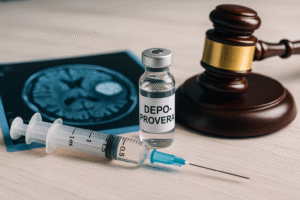Thousands of women are now filing lawsuits over vaginal mesh complications. These women believed they were choosing a safe, medical fix. They trusted their doctors. They trusted the manufacturers. They wanted relief from pelvic organ prolapse or stress urinary incontinence.
They never expected this kind of harm.
The mesh was supposed to support their bodies. Instead, it broke them down. Many women felt pain soon after surgery. Others lived with strange symptoms for years. Doctors gave wrong answers. Some blamed aging. Some blamed childbirth. No one suspected the mesh.
Then the pain got worse.
Women began losing their ability to walk, sleep, or be intimate. They had to undergo revision surgeries. Some went through two or three. Some still have parts of the mesh inside them. These pieces can’t be removed without risking more damage.
In 2025, the legal fight continues. This is not over. New lawsuits are being filed every week. Many women are just now discovering the truth. They did not know the mesh caused their pain until a doctor finally made the connection. That’s why the law still allows them to sue.
You may be in that same position. If you’ve had a vaginal mesh implant and now live with pain, you may still have time to act. A strong case can lead to real compensation. You can get help with medical costs. You can also hold the company accountable.
This lawsuit is not just about money. It’s about truth. It’s about recognition. And it’s about justice for what happened to you.
What Is Vaginal Mesh?
Doctors used vaginal mesh to support weak pelvic muscles. They implanted it to treat two main problems—pelvic organ prolapse (POP) and stress urinary incontinence (SUI). Both conditions happen when pelvic tissues get stretched or damaged. The mesh was supposed to hold organs in place and stop leaks.
Most of these products were made from polypropylene. That’s a type of plastic also used in hernia repairs. Manufacturers claimed it was safe for long-term use in the body. The FDA cleared the first transvaginal mesh in 1996. The agency used the 510(k) process which skip full safety testing if the product is “similar” to one already on the market.
That shortcut turned out to be a disaster.
Soon after, women started reporting serious problems. Many felt sharp pain in the pelvis. Others noticed bleeding, infections, or pain during sex. Some couldn’t urinate. Others couldn’t stop leaking. In some cases, the mesh cut into nearby organs. In many, it began to erode through the vaginal wall.
These injuries didn’t go away. They often got worse. Women had to return for more surgery. Some needed the mesh removed. Some had to live with permanent damage. Most said they were never warned about any of this.
Doctors and device makers kept calling the mesh safe. But the complaints kept growing. It became clear that this “solution” was causing more harm than good.
Why Women Are Suing Mesh Makers
The manufacturers didn’t warn anyone. They sold these products as safe and easy. Many women believed them. Now they want justice.
Lawsuits say:
-
The companies designed a defective product.
-
They failed to warn patients and doctors.
-
They misled the public with false claims.
-
They knew about the risks and stayed quiet.
-
They used materials unfit for use inside the body.
Court evidence shows companies flagged safety concerns years ago. These concerns never reached the public.
Who Are the Main Targets?
Most lawsuits name these companies:
-
Boston Scientific (Obtryx, Solyx, Advantage Fit)
-
Coloplast (Altis, Supris, Aris)
-
Ethicon / Johnson & Johnson (TVT, Prolift – older devices)
All three faced lawsuits for years. Some settled. Others are still fighting in court.
Why New Cases Are Still Being Filed
Doctors misdiagnosed many women. Some were told it was aging or back pain. Others blamed menopause. Only recently did some doctors trace the symptoms to mesh.
That delay matters. The law gives you time after discovery. If you just learned the mesh caused your injuries, you may still sue.
Other reasons include:
-
New revision surgeries
-
Recent FDA warnings
-
More research proving harm
-
Stronger legal strategies in state courts
Why Minnesota and Massachusetts Matter
These two states now lead the legal fight against mesh manufacturers. Coloplast has its U.S. headquarters in Minnesota. Boston Scientific is based in Massachusetts. This detail changes everything.
State law allows lawsuits to stay local when the company being sued is based in that state. That means women can file cases in Minnesota or Massachusetts and keep them in state court. The defendants cannot shift these cases to federal court through a legal tactic called “removal.”
This legal setup gives injured women a big advantage.
State courts move faster than federal ones. They offer more personalized attention. Judges handle fewer cases at once. That means less delay. Trials come sooner. Discovery moves quickly. There’s no long wait for decisions.
State courts also let juries hear more of the story. Local juries tend to be more open to real-life suffering. They don’t always favor corporations. When a jury hears about pain, trauma, and lost years, they respond. That kind of response can lead to larger verdicts.
Manufacturers know this. That’s why they often push to settle before trial in state court. They want to avoid the risk. These faster timelines and more sympathetic juries give women the power to negotiate stronger settlements.
That’s why lawyers now target Minnesota and Massachusetts. These states offer a better legal path for victims. They also force companies to face the people they harmed—close to home.
Legal Trends and Settlement Updates
In 2025, lawyers are filing cases one by one. They are avoiding class actions and MDLs. This shift gives each woman a chance for a bigger payout.
Estimated Settlement:
-
Most case settle between $150000 and $800000
-
Strong case average between $400000 and $600000
-
Some verdicts reach $25 million or more
Settlements depend on:
-
Type and severity of injuries
-
Need for multiple surgeries
-
Age of the plaintiff
-
Loss of income
-
Medical costs and pain levels
New Studies Back the Lawsuits
Doctors once said mesh was safe. Recent studies now say the opposite. Research shows the mesh begins to break down in 60 days. It cracks and releases particles. These particles cause swelling, pain, and long-term damage.
One new study linked the mesh to autoimmune disease. Others showed tissue rejection and nerve damage. This science now helps lawyers prove the product caused real harm.
What Makes a Strong Case?
Lawyers look for:
-
A device from Boston Scientific, Coloplast, or Ethicon
-
Clear medical records showing complications
-
At least one revision or removal surgery
-
A timeline linking symptoms to the mesh
-
A diagnosis within the last few years
Each of these points builds a stronger case in court.
What the FDA Is Doing Now
The FDA banned transvaginal mesh for pelvic organ prolapse in 2019. That decision came after year of complaints injuries and mounting research. The agency finally admitted there wasn’t enough proof that the benefit outweighed the risk.
In 2025, the FDA is looking at more changes. The agency now wants to reclassify transvaginal mesh used for stress urinary incontinence (SUI) as a high-risk device. This move would put it in the Class III category. That’s the most serious level.
If this happens, mesh makers must go through a full premarket approval (PMA) process. They can no longer rely on shortcut. They must prove their product are safe and effective before selling them. That mean better testing stricter control and more accountability.
This shift matters for many reasons.
It confirms what patients have said all along. These devices were never safe. The original fast-track approvals ignored real-world risks. Now, the FDA is finally responding to years of harm.
It also helps current lawsuits. Women can point to this change as proof. The government now agrees that these implants need more oversight. That kind of support strengthens legal claims and helps build stronger arguments in court.
This new stance shows the FDA is finally listening. It shows that the system failed women—and now it’s trying to catch up.
Can You Still File a Lawsuit?
Yes. Most MDLs have closed. But your case can still go forward. The key is when your symptoms started. If your first problems happened recently—or if a doctor just linked your pain to the mesh—you may still qualify.
Each state has a deadline. Your lawyer can check if you still have time.
What Will Increase Your Payout?
A higher payout comes from:
-
Proof of long-term injuries
-
Young age at the time of the implant
-
Ongoing pain or disability
-
Impact on work or daily life
-
Strong medical records and expert opinions
A scheduled trial date often helps too. That pressure can lead to a larger offer from the company.
Why Settlements in 2025 May Be Higher
Vaginal mesh lawsuits are gaining momentum again. Many of these cases are now heading back to trial. That changes everything. Defendants know what happens when a jury hears the full story. They’ve seen the verdicts. Some payouts have reached tens of millions of dollars.
Companies don’t want that risk.
They know juries tend to side with victims. Women describe years of pain, trauma, and surgeries. These stories hit hard in a courtroom. Judges are allowing more evidence. Juries are hearing internal emails, warnings ignored, and profits put ahead of safety.
Public opinion has also shifted. The public now understands that these injuries are real. This is no longer seen as a rare or minor issue. People now know the mesh caused life-changing damage. That growing awareness adds pressure in the courtroom and outside it.
Another reason? Most cases are no longer part of large MDLs. Lawyers are filing them one by one. That puts pressure on the defense. Each case has a chance to go to trial. Each one can lead to a headline. Companies don’t want that attention.
All of this leads to better settlements.
Defendants are more willing to pay now. They want to avoid the risk, the trial, and the public spotlight. That’s why lawyers expect higher payouts in 2025. Strong cases are getting real offers. Some women are finally seeing justice—and fair compensation.
Final Thoughts
The vaginal mesh fight is still going. This story is not finished. In 2025, more women are stepping forward. They are sharing what happened. They are asking for answers. They are demanding justice.
The facts are now on their side. Studies prove the mesh breaks down. Doctors admit they missed the signs. The FDA is changing the rules. Courts are starting to listen. These shifts are big. They open the door for real change.
If you had a mesh implant and now live with pain, you are not alone. Your symptoms are not in your head. Your pain is not normal. Your experience matters. And yes, you may still qualify for compensation.
A lawsuit won’t erase what happened. But it can help you cover medical costs. It can help you hold the right people accountable. It can give you the chance to be heard in a way that matter.
This may be your moment to act. A short conversation with a lawyer can give you answers. You deserve the truth. You deserve options. And if you choose to fight you deserve to be backed by fact evidence and a legal team that believe you.


